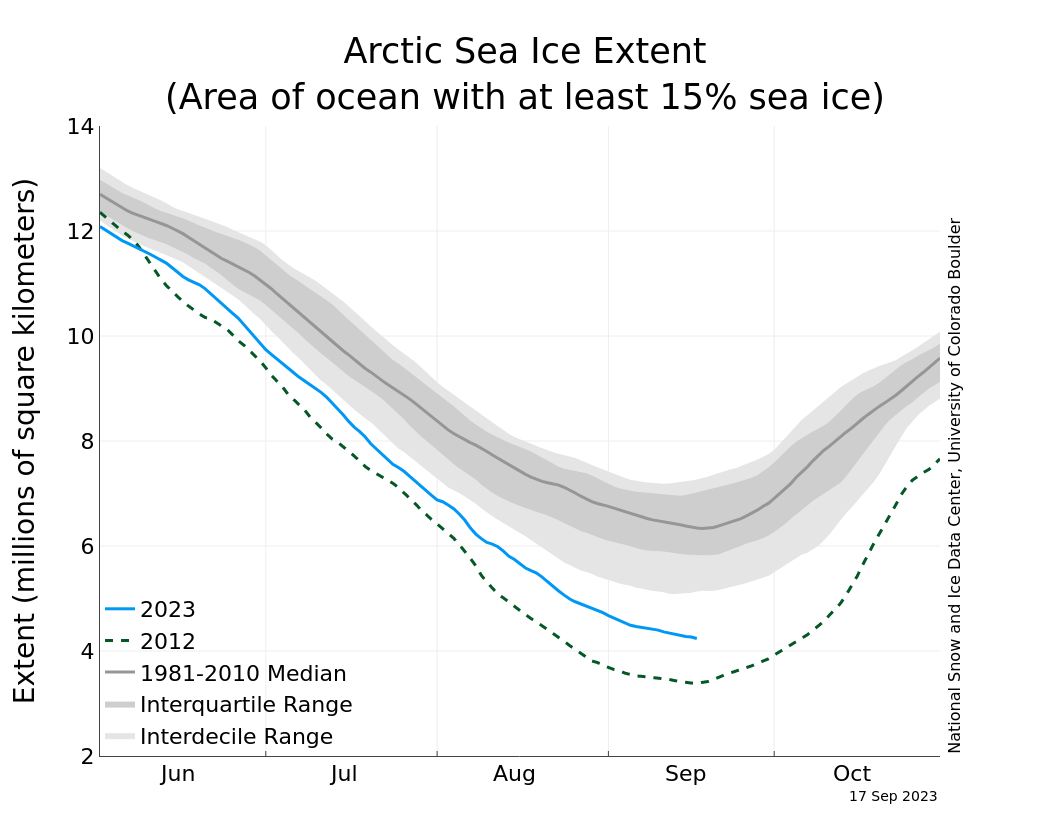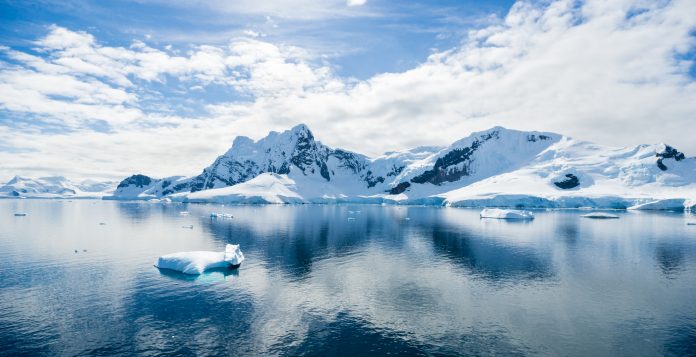Scientists suggest that the record-warm oceans, changes in ocean currents and winds, and the developing El Niño phenomenon may all be contributing factors to the alarmingly low sea ice levels in Antarctica this year
Satellite data shows the sea surrounding Antarctica has reached a remarkably low level during the winter, marking a concerning milestone for a region that had previously appeared resilient to the effects of global warming.
“It’s so far outside anything we’ve seen; it’s almost mind-blowing,” says Walter Meier, who monitors sea ice with the National Snow and Ice Data Center.
Causes of shrinking sea ice
Polar experts warn that an unstable Antarctica could lead to widespread consequences. Antarctica’s vast ice cover plays a crucial role in regulating the Earth’s temperature by reflecting the Sun’s energy and cooling the surrounding water.
If Antarctica loses its ice, it could go from being Earth’s cooling system to a heat source, experts warn. Currently, the sea ice on the surface of the Antarctic Ocean measures less than 17 million square kilometres. This is 1.5 million square kilometres less than the typical September average and significantly below previous record lows for winter ice coverage.
We’re seeing a significant area of missing ice, roughly five times the size of the British Isles, which could have far-reaching effects on our planet’s climate.

Impact on Antarctica and Global Climate
Dr. Meier doesn’t have a positive outlook for a significant recovery in sea ice.
Understanding all the reasons behind this year’s reduced sea ice remains a puzzle for scientists. Studying patterns in Antarctica has always been tough.
In a year marked by numerous records of high global and ocean temperatures, some experts argue that low sea ice levels are the most crucial indicator to focus on.
“We can see how much more vulnerable it is,” says Dr Robbie Mallett of the University of Manitoba, based on the Antarctic peninsula.
“We can see how much more vulnerable it is”
In addition to facing isolation, severe cold, and strong winds, this year’s thin sea ice has added an extra layer of challenge to the team’s work.”There is a risk that it breaks off and drifts out to sea with us on it,” Dr Mallett says.
Scientific Research and Observation
Antarctica’s sea ice forms in winter (March to October) and usually melts in summer. It’s part of a system that includes icebergs, land ice, and floating ice shelves.
Sea ice helps keep the ocean from warming up. When it shrinks, it can trigger a cycle where more ice melts. The exposed dark ocean absorbs sunlight and adds heat to the water. Scientists call this the ice-albedo effect.
This change could disrupt Antarctica’s role in regulating global temperatures.
Professor Anna Hogg, an Earth scientist at the University of Leeds, suggests that the changes occurring in Antarctica’s ice sheets align with the predicted worst-case scenarios.
From the 1990s onward, Antarctica’s land ice loss has contributed 7.2mm to rising sea levels.
Even small rises in sea levels can lead to extremely damaging storm surges that threaten coastal communities. If substantial amounts of land ice continue to melt, it could have catastrophic consequences for millions worldwide.
Antarctica’s Changing Environment
At the research station Rothera, Dr Mallett is using radar tools to examine the thickness of sea ice as part of an international project called Defiant. Along with fellow scientists, they are working to understand the reasons behind the disappearing winter ice.
This year’s unusually warm oceans, which have reached record-high temperatures, are believed to be a significant factor. Warmer water doesn’t freeze as easily.
Additionally, alterations in ocean currents and the winds that influence Antarctic temperatures could play a role.
The El Niño weather pattern, currently in its early stages in the Pacific, might also play a part in reducing sea ice, although it remains relatively weak.











